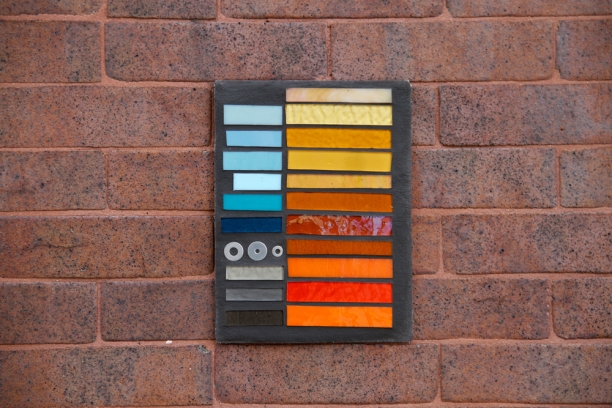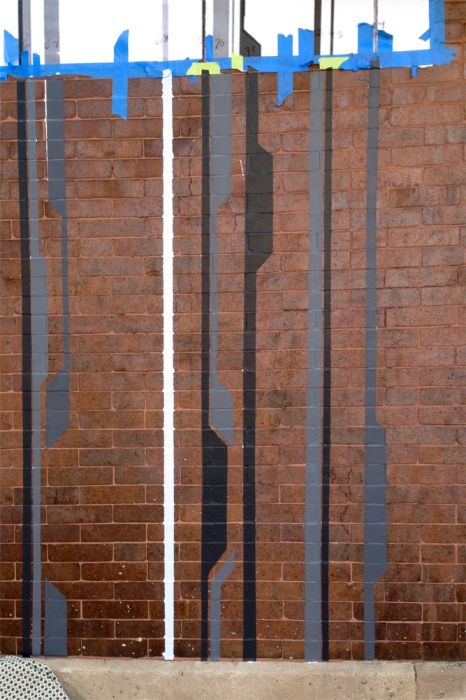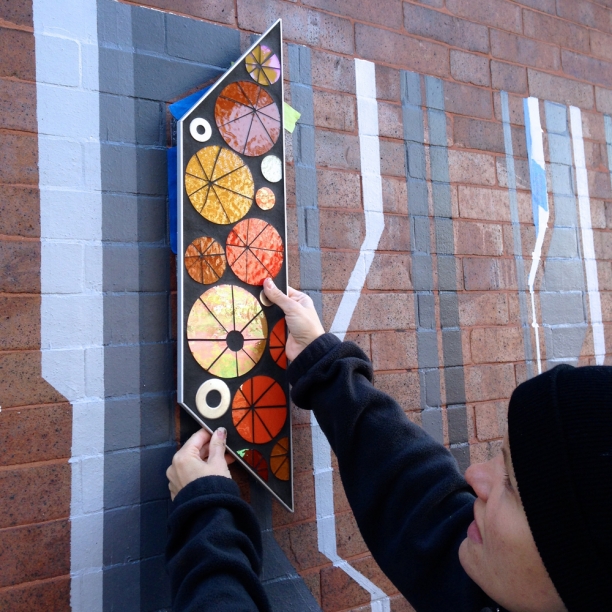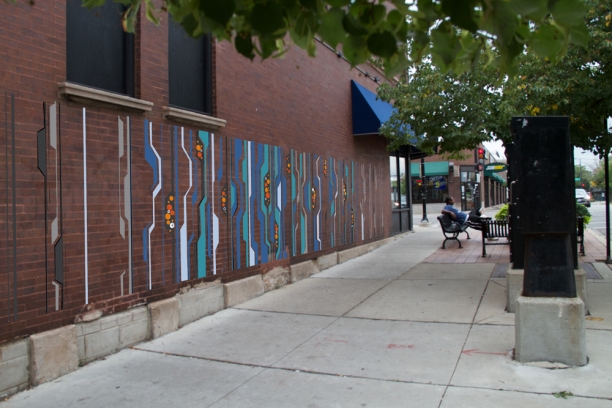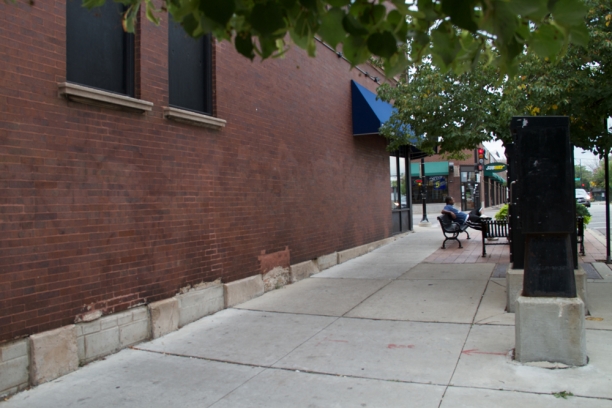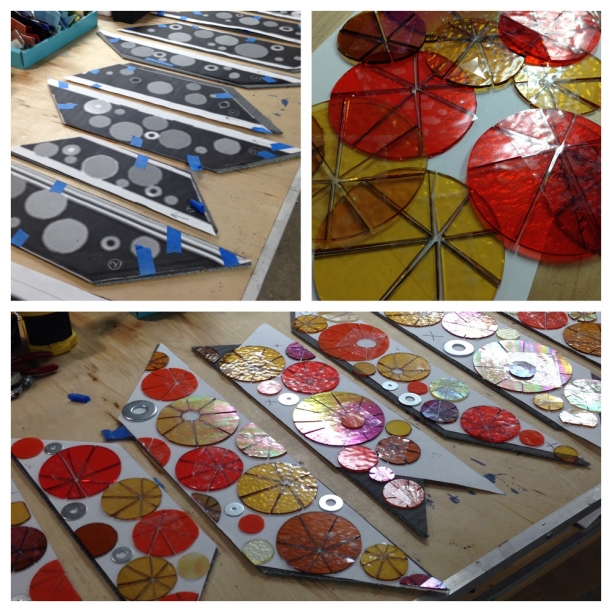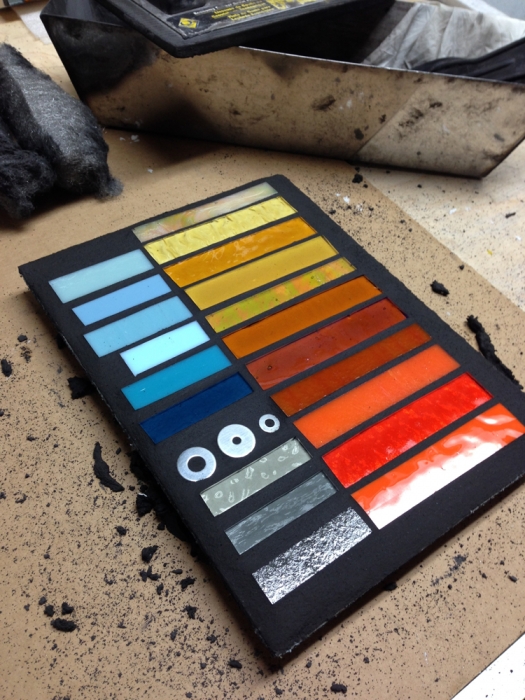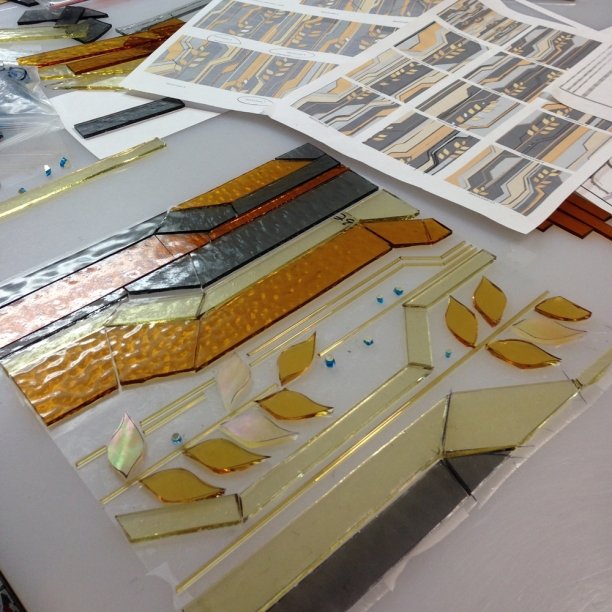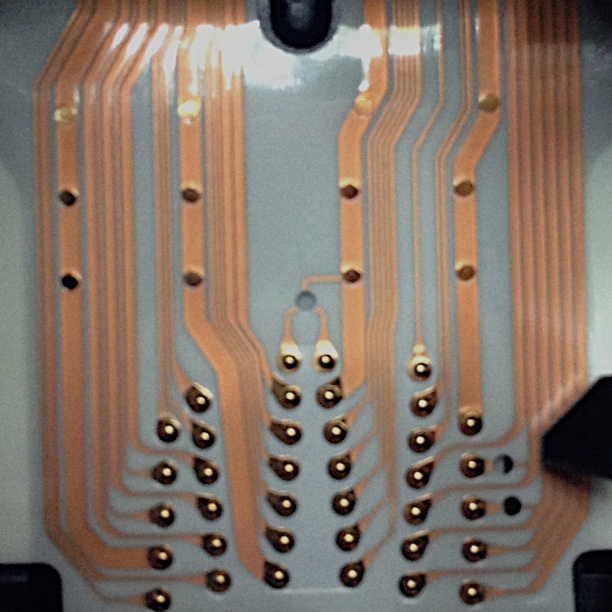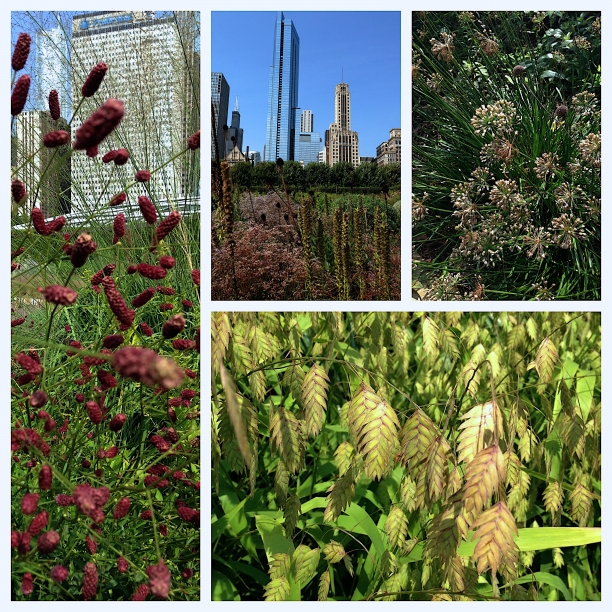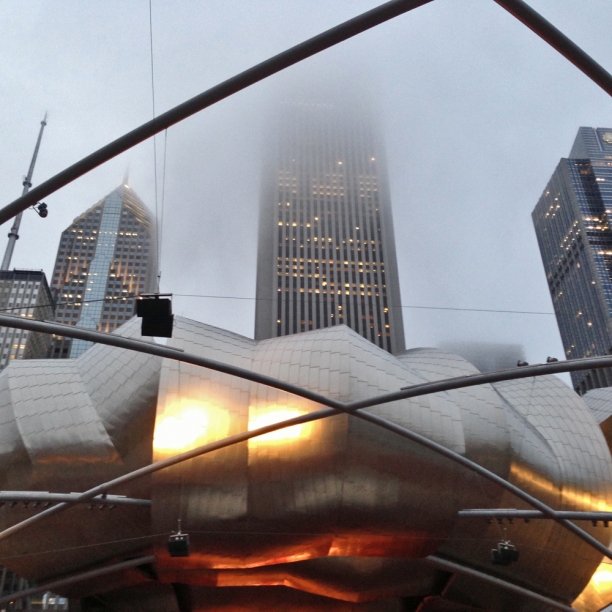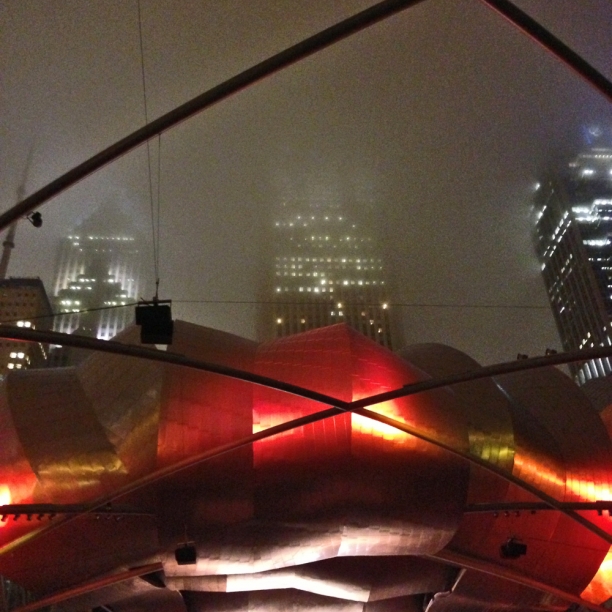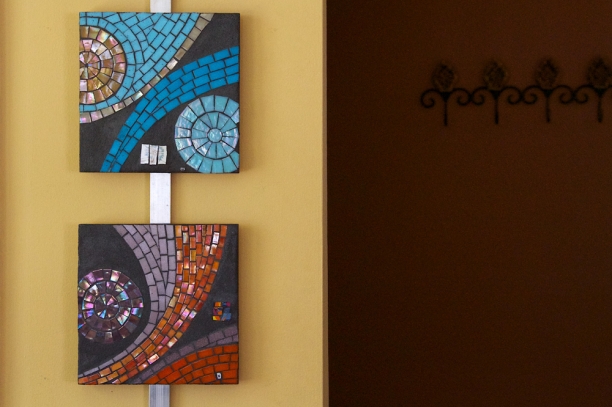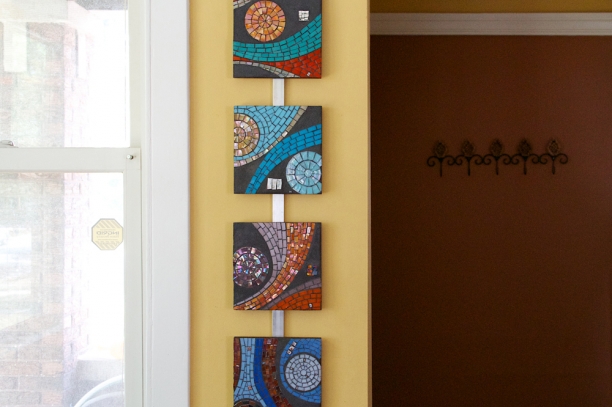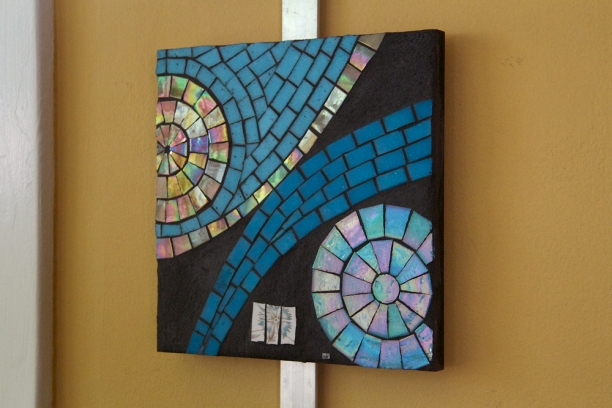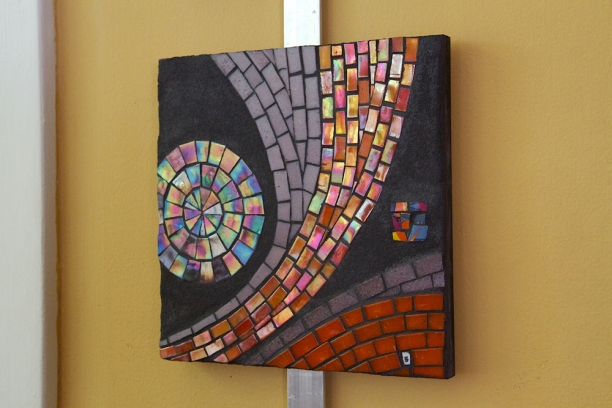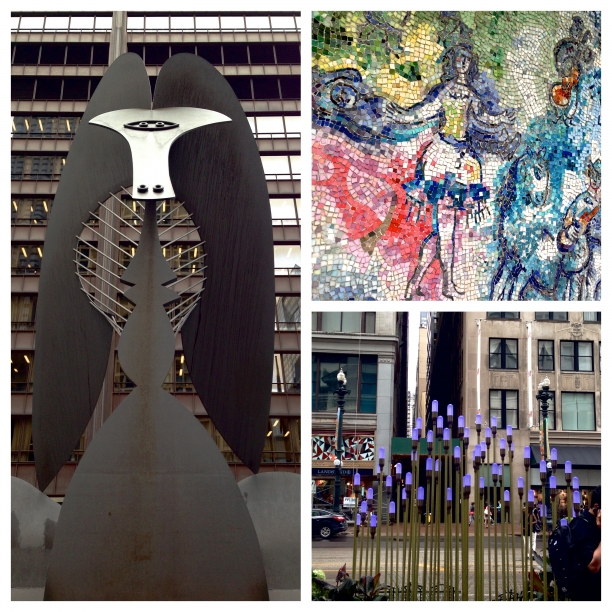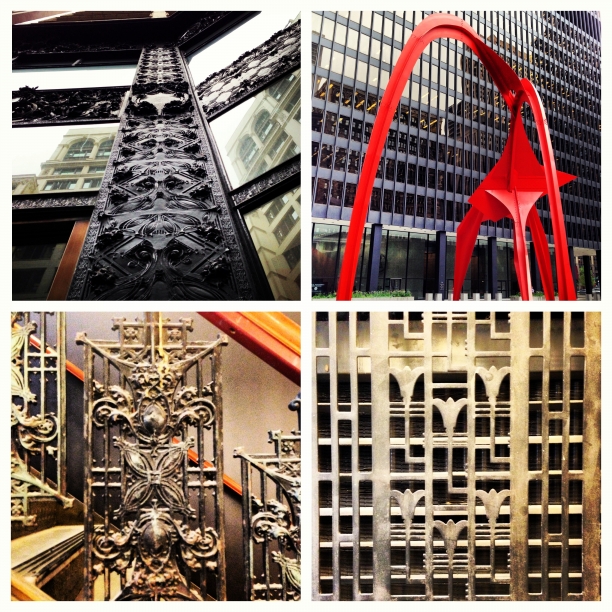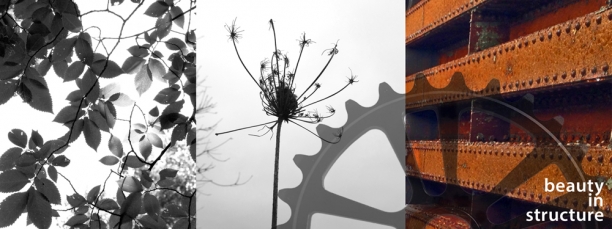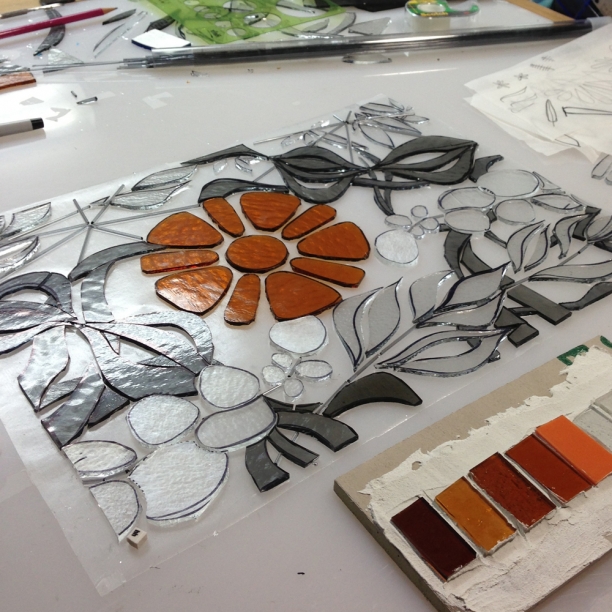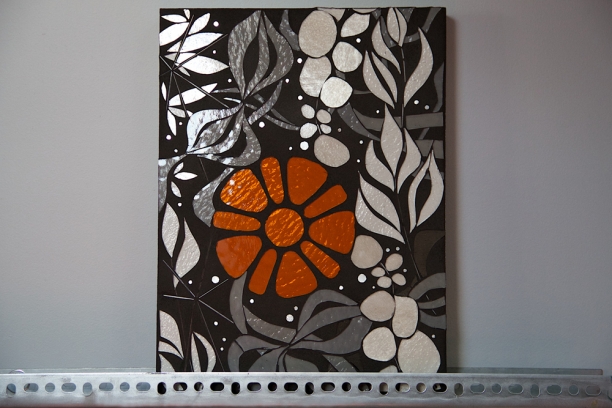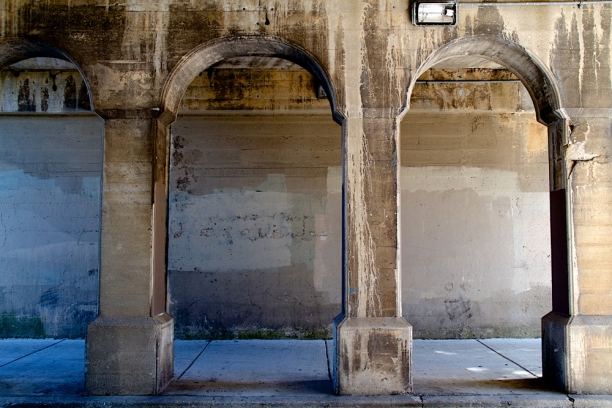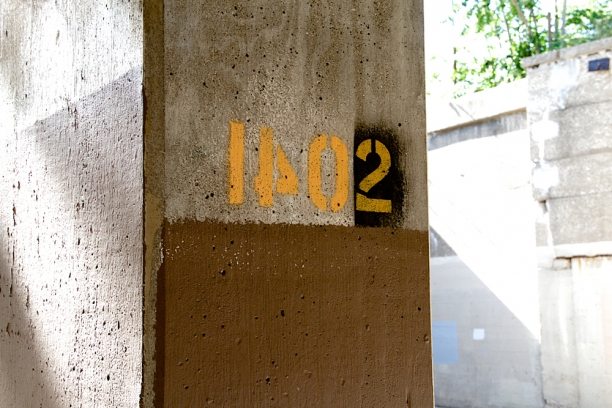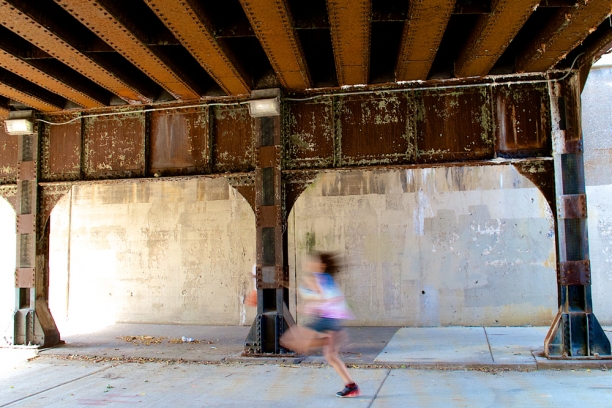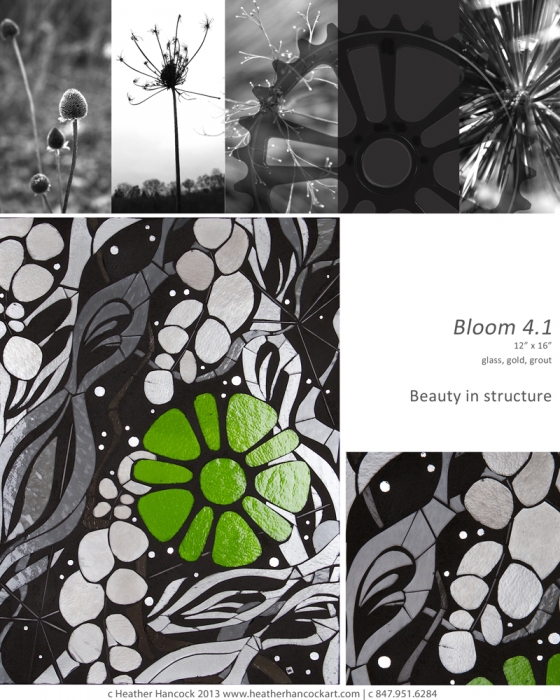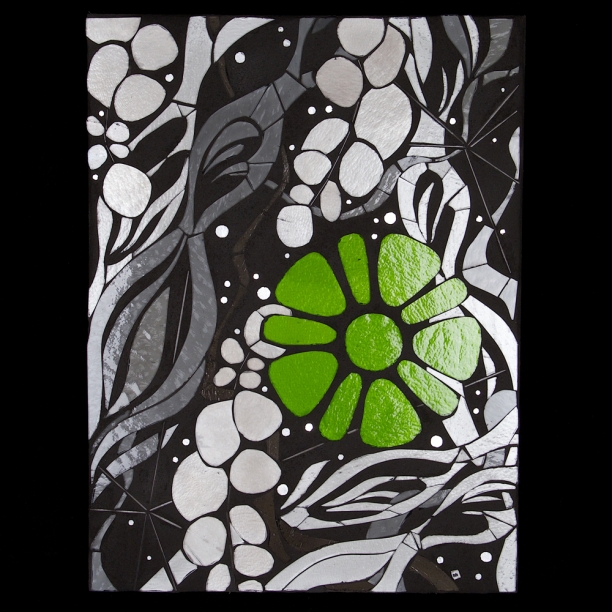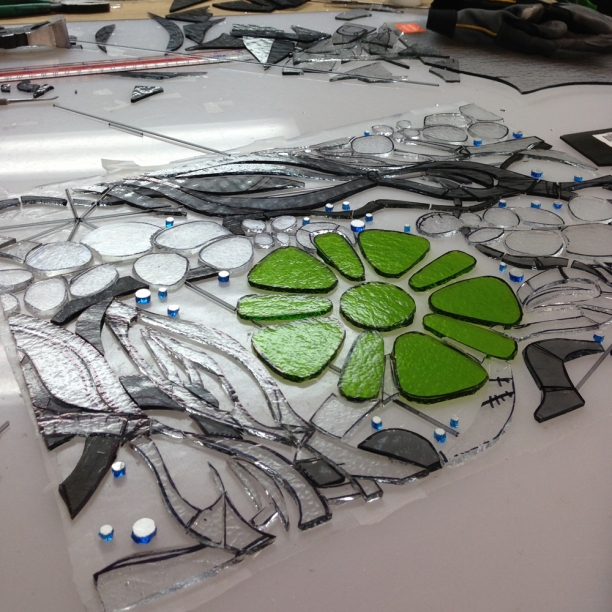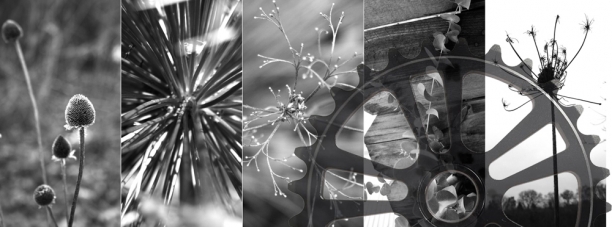The original drawing of Link featured layered blues with pops of orange and amber. Running at the lakefront has made me see blues in a new way. Water and sky is endless dynamic with infinite numbers of different blues and in infinite combinations. The RFP called for a concept that evoked water. So I had blues as the starting point for my drawings.

I created a sample glass palette to help visualize color--even went and attached it to the masonry wall to see how the colors worked with the red brick.
[image]
The translation of color from glass to paint was hard. The dynamic nature of glass--shifting and shimmering with light--makes it completely different from paint. I loved the color palette on the glass sample board but as we started painting blues, the flat, intense colors seemed at odds with each other and the brick. We tried graying the turquoise down. We tried taking out some of the light blue lines. I brought a glass element to hold against the blues. The blues seemed busy and heavy behind the glass rather than floating on the brick as envisioned. As soon as I saw the finished untaped grayscale lines at either end of the mural I was super happy. (Notice the one remaining line of pale blue...that was soon repainted pale gray.)
And the glass was super happy too.
Sarah was game; she'd had similar experiences with previous projects and getting to paint colors that worked at wall-scale. Grayscale would be a sophisticated counterpart to the sparkling glass elements.
